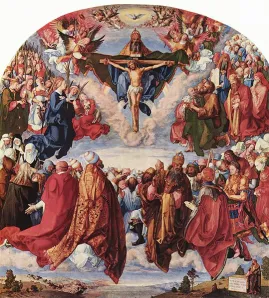Rev. James Lewis Stoll, who died on December 8th 1994, was a Unitarian Universalist minister who became the first ordained minister of any religion in the United States or Canada to come out as gay. He did so at the annual Continental Conference of Student Religious Liberals on September 5, 1969 in La Foret, Colorado. Later, he led the effort that convinced the Unitarian Universalist Association to pass the first-ever gay rights resolution in 1970.
After training at Starr King School for the Ministry, in Berkeley, followed by ordination, he served as pastor at a church in Kennewick, Wash., from 1962 until 1969. For reasons that have not been disclosed, he was asked to resign, and then moved to San Francisco, where he shared an apartment with three others.
In September of 1969, he attended a convention of college-age Unitarians in Colorado Springs. One evening after dinner, he stood up and came out publicly as a gay man. He declared his orientation, stated that it was not a choice, that he was no longer ashamed of it, and that from then on, he would refuse to live a lie.
“On the second or third night of the conference,” according to Mr. Bond-Upson, “after dinner, Jim got up to speak. He told us that he’d been doing a lot of hard thinking that summer. Jim told us he could no longer live a lie. He’d been hiding his nature — his true self — from everyone except his closest friends. ‘If the revolution we’re in means anything,’ he said, ‘it means we have the right to be ourselves, without shame or fear.'
“Then he told us he was gay, and had always been gay, and it wasn’t a choice, and he wasn’t ashamed anymore and that he wasn’t going to hide it anymore, and from now on he was going to be himself in public. After he concluded, there was a dead silence, then a couple of the young women went up and hugged him, followed by general congratulations. The few who did not approve kept their peace.” ’
After the convention, Stoll wrote articles on gay rights, and preached sermons on the subject at several churches. The following year, the full annual meeting of the Unitarian Universalist Association passed a resolution condemning discrimination against homosexual persons, beginning a gradual but irresistible move towards full LGBT inclusion.
No action was ever taken by the church against Stoll, and so he remained a minister in good standing, but he was never again called to serve a congregation. It is not clear whether this had anything to do with lingering prejudice against his orientation. It could also be on the grounds of some suspicions of drug abuse, or of inappropriate sexual behaviour.
Later, he founded the first counseling center for gays and lesbians in San Francisco. In the 1970s he established the first hospice on Maui. He was president of the San Francisco chapter of the American Civil Liberties Union in 1990s. He died at the age of 58 from complications of heart and lung disease, exacerbated by obesity and a life-long smoking habit
Stoll's name is not well known today, but for this brave and honest public witness, he deserves to be better remembered.In declaring himself, he was not the first ordained clergyman to come out, but he was the first to do so voluntarily, and the first in an established denomination. His action undoubtedly made it easier for the others who followed him, and to the formal acceptance by the Unitarians of openly gay men and lesbians in the church, and to the now well-established process to full LGBT inclusion in so many denominations.
He was not a Catholic, but in Catholic tradition today would be considered his "die natalis", or day of new birth in Christ. Remember him.
He was not a Catholic, but in Catholic tradition today would be considered his "die natalis", or day of new birth in Christ. Remember him.
Source:
Haunted Man of the Cloth, Pioneer of Gay Rights (NY Times)



